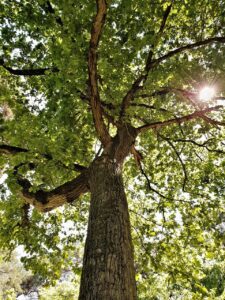
Over the last 4 months, ever since we have gone into lockdown to fight the Novel Coronavirus, like most of us, I’ve had time to introspect on a lot of things, primary among them being the Montessori Way of Learning.
With re-runs of Mahabharata and Ramayana running nonstop on Satellite Television, it made me wonder, MONTESSORI education system is not a novel idea for us Indians. In fact the basic facets of Montessori education can find their roots deeply embedded within the ancient ‘Gurukul’ system of learning.
Look at the instances of Rama, Lakshman, Bharat and Shatrughan, going to Guru Vasishtha’s hermitage or of the Pandavas and Kauravas going to Guru Dronacharya’s ashram. While all the students of the gurukul were taught the same lessons, over a period of time, the individuality of the person would come to the fore and be the primary skill of the person. That is the reason why you had students graduating with varying skill sets. These were brothers of varying ages, going to the same gurukuls, learning the same lessons and graduating at the same time, but the unique trait of each one stood out.
The princes resided in ashrams in the middle of the forest, with just the basic amenities being provided. They had to study with fellow students belonging to different walks of life, develop relationships with them, forage into the forest for their day to day meal and help the matron of the ashram with domestic chores. The princes had no choice other than to be independent and had to complete any work given to them. The princes were exposed to a whole gamut of subjects, basic home management skills, geography, history, economics, mathematics, political sciences, medicine, etc. This made the students completely rounded and capable of facing any situation.
We all have read about the likes of Chanakya and Chandragupta Maurya travelling to Takshashila in modern day Afghanistan, in the quest for knowledge and learning the real time application of the knowledge obtained. We have also read about travelers from far away lands visiting our nation and quenching their thirst for knowledge at the world-renowned Nalanda University. This also has kindled me to research more into such parallels that exist in other cultures and religions as well.
In all the examples I have cited above, there is a pattern that emerges. All these places of learning were built on 3 cornerstones.
- Making the child independent.
- Providing the children an insight into all subjects and aspects of life.
- Nurturing the child’s individual talent
Are these not the same corner stones on which the Montessori Education system is based upon? The more I delve deeper into this subject there is one conclusion that I come to. This has very much been the fabric of our ancient system as well.








No comment yet, add your voice below!